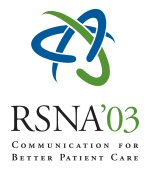Abstract:
HTML
After years of experience with our own developed PACS we developed a Pathology and Radiology Information System (PRIS) fully integrated with our PACS. The Radiology information system is also used by the Endoscopy department. For the last two years we are incorporating Pathology and Endoscopy images to our PACS. The Hospital Information System is in charge of the scheduling, management and financial issues of the hospital, while the PRIS is in charge of the examinations reporting and notification. Both systems are fully integrated. Radiologists and Pathologists share the same Information System and they cooperate in their daily work. Some reports are elaborated jointly giving an added value to the final report. The Radiologists can also request Pathology studies from the Radiology Information System side. Full PACS Integration: The PRIS has a DICOM Worklist service which allows the modalities to ask for the list of the daily scheduled patients. The PRIS client user interface application can call the radiology viewer to display the images related with the displayed report. Demographic data reconciliation between the different systems is also possible. Our approach permits an easy integration of the pathology images. After the pathology images are acquired with digital cameras, they are converted to a DICOM file format, and sent to the PACS archive using the DICOM protocol. Thus the Pathology images can be consulted from the Radiology or the Pathology department using standard DICOM Viewers and Workstations. This DICOM conversion is done using the demographic patient data and the examination data from the PRIS, thus these images are always linked with the pathology reports. Endosopy images are acquired digitizing the video signal from the encoscope. After the digitalization the static images are converted to DICOM and sent the DICOM PACS archive through the network. On the software that we have developed to control the digitalization board, we have also incorporated a DICOM Modality Worklist service. Therefore the system works as any other radiology modality, the technician or the physician choose the patient from a list and afterwards they acquire the images during the encoscopy examination. All the patient and examination data sent from the PRIS through the Modality Worklist service is used to create the DICOM file images that will be stored to the PACS archive. Since in this examination data we also include an accession number, the encoscopy images on the PACS are linked the their reports on the PRIS.
Since we can not imagine and electronic patient record without medical images, a PACS Archive should be designed to store not only radiology images but also any kind of medical image. The DICOM standard can be used with any king of medical images not only radiological ones. It is worth to use DICOM PACS infrastructure to store any kind of medical image in the hospital.
Questions about this event email: JFernandezB@cspt.es
Fernandez-Bayo ScD, J,
Pathology and Endoscopy Images in a PACS. Radiological Society of North America 2003 Scientific Assembly and Annual Meeting, November 30 - December 5, 2003 ,Chicago IL.
http://archive.rsna.org/2003/3102736.html

